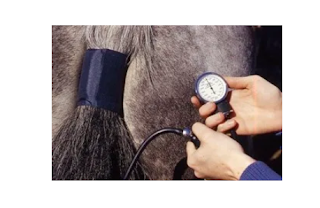How to Spot Laminitis Early
"Laminitis can strike anytime, but in the spring, when fresh grass is sprouting and horses are spending more and more time turned out, the risk of this painful, potentially fatal condition rises sharply. The reason is that new grass contains high levels of a complex sugar called fructan, which horses are unable to digest. As a result, a bellyful of spring grass can upset the bacterial balance of the equine gut, causing metabolic upheaval that precipitates laminitis, an inflammation of the sensitive plates of soft tissue (laminae) in the horse's foot (Equusmagazine.com)."
"With careful management of your horse's diet--both roughage and grain--you can help to protect him from the cascade of events that leads to laminitis. But some horses develop the disease despite the best of care. In those cases, time is a critical commodity; the earlier you can recognize the signs and begin treatment, the greater your horse's chance of survival.'
'The classic clinical signs of laminitis--extreme reluctance to walk and a stance in which the hind legs are well under the body to take pressure off the front hooves--are hard to miss. But there are two other more subtle signs that can help you recognize impending trouble much earlier: Increases in a horse's blood pressure--and in most cases, pulse strength--often mean laminitis is imminent (Equusmagazine.com)."
Click on the link to learn how to take your horse's blood pressure and monitor their pulse to help detect early signs of laminitis!!
To protect yourself when an accident happens, get a Ride Safe Medical ID bracelet today!! We do so much to protect, care for (and often times pamper) our equine partners. Why not take an extra precaution to protect yourself? Ordering a Ride Safe bracelet is simple, easy and affordable. Want to learn more? Visit www.teamridesafe.com today!
 |
| Photo credit: equusmagazine.com |
'The classic clinical signs of laminitis--extreme reluctance to walk and a stance in which the hind legs are well under the body to take pressure off the front hooves--are hard to miss. But there are two other more subtle signs that can help you recognize impending trouble much earlier: Increases in a horse's blood pressure--and in most cases, pulse strength--often mean laminitis is imminent (Equusmagazine.com)."
Click on the link to learn how to take your horse's blood pressure and monitor their pulse to help detect early signs of laminitis!!
To protect yourself when an accident happens, get a Ride Safe Medical ID bracelet today!! We do so much to protect, care for (and often times pamper) our equine partners. Why not take an extra precaution to protect yourself? Ordering a Ride Safe bracelet is simple, easy and affordable. Want to learn more? Visit www.teamridesafe.com today!



Comments
Post a Comment